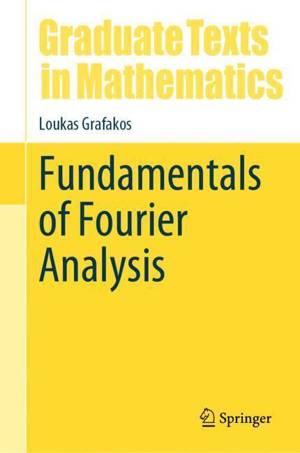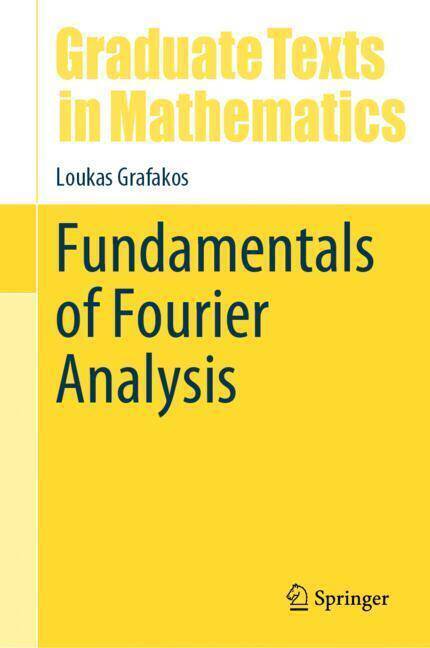
- Afhalen na 1 uur in een winkel met voorraad
- Gratis thuislevering in België vanaf € 30
- Ruim aanbod met 7 miljoen producten
- Afhalen na 1 uur in een winkel met voorraad
- Gratis thuislevering in België vanaf € 30
- Ruim aanbod met 7 miljoen producten
Zoeken
Omschrijving
This self-contained text introduces Euclidean Fourier Analysis to graduate students who have completed courses in Real Analysis and Complex Variables. It provides sufficient content for a two course sequence in Fourier Analysis or Harmonic Analysis at the graduate level. In true pedagogical spirit, each chapter presents a valuable selection of exercises with targeted hints that will assist the reader in the development of research skills. Proofs are presented with care and attention to detail. Examples are provided to enrich understanding and improve overall comprehension of the material. Carefully drawn illustrations build intuition in the proofs. Appendices contain background material for those that need to review key concepts. Compared with the author's other GTM volumes (Classical Fourier Analysis and Modern Fourier Analysis), this text offers a more classroom-friendly approach as it contains shorter sections, more refined proofs, and a wider range of exercises. Topics include the Fourier Transform, Multipliers, Singular Integrals, Littlewood-Paley Theory, BMO, Hardy Spaces, and Weighted Estimates, and can be easily covered within two semesters.
Specificaties
Betrokkenen
- Auteur(s):
- Uitgeverij:
Inhoud
- Aantal bladzijden:
- 407
- Taal:
- Engels
- Reeks:
- Reeksnummer:
- nr. 302
Eigenschappen
- Productcode (EAN):
- 9783031564994
- Verschijningsdatum:
- 22/07/2024
- Uitvoering:
- Hardcover
- Formaat:
- Genaaid
- Afmetingen:
- 156 mm x 234 mm
- Gewicht:
- 766 g

Alleen bij Standaard Boekhandel
+ 183 punten op je klantenkaart van Standaard Boekhandel
Beoordelingen
We publiceren alleen reviews die voldoen aan de voorwaarden voor reviews. Bekijk onze voorwaarden voor reviews.








